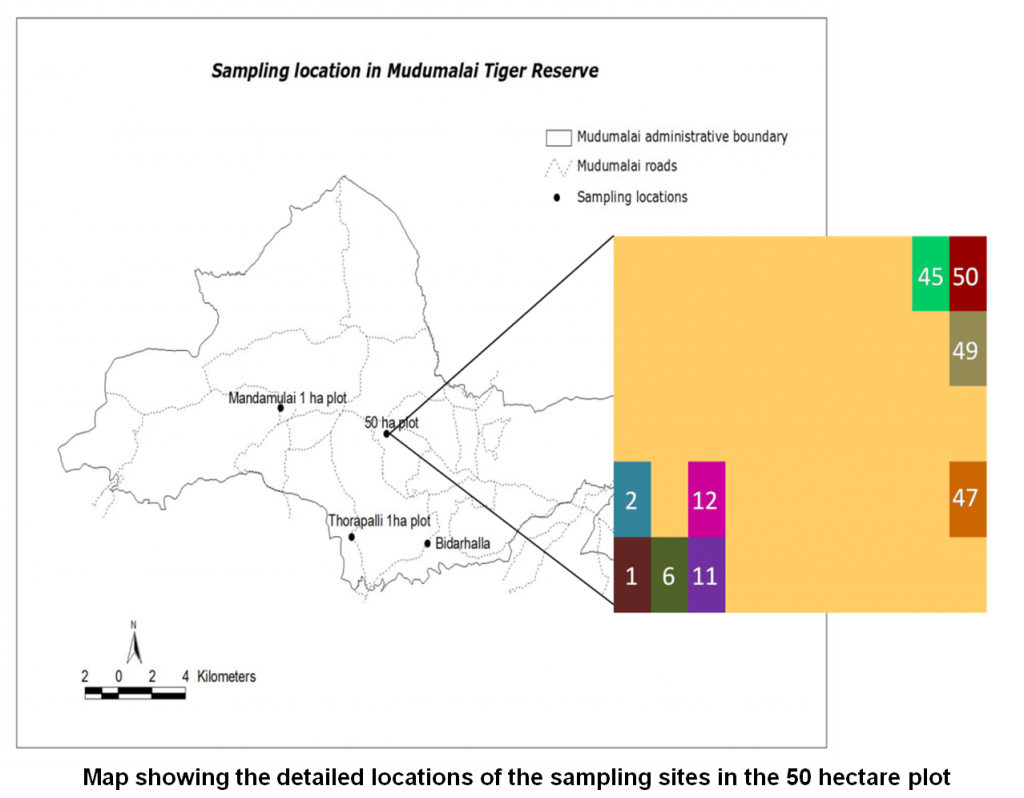A test of the Janzen-Connell hypothesis on Syzygium cumini seedlings infected by fungal pathogens in the Dry Deciduous Forest of Mudumalai Tiger Reserve
Almost 4 decades ago Janzen(1970) and Connell(1971) proposed that one of the key factors in maintaining high tropical tree species diversity was played by the various host-specific seed and seedling predators, herbivores and pathogens. They predicted inexplicably high mortality of seed and seedlings close to the parent tree because of these natural enemies. Connell expected high progeny mortality under adult crowns because of herbivores which normally feed on adults. Janzen proposed that, in addition to such “distance-responsive” agents, density-responsive predators or pathogens will concentrate their activities near adult where initial seed input is the highest.
The primary motive of the research was to identify the spatial patterns of the dispersed seedlings, about four year’s old and subsequent infection by fungal pathogens, which determine their recruitment, relative to the distance from the parent tree. The field experiment was carried out in the dry deciduous part (50 Hectare plot) of the Mudumalai Tiger Reserve, Tamil Nadu, which confirmed that there is both a decrease in the seedling density and in the proportion of infected seedlings, as a function of distance from the parent tree, among the seedlings of Syzygium cumini, a bird-dispersed tree species. Ten sample plots were selected in the 50-hectare plot, of the dry deciduous part of the tiger reserve, in accordance with the criterion that it was in isolation (at least 50-80m) from any other conspecific adult.Sampling method of line transects, of 50 meters was used for all the plots, and the data for every 1m×1m quadrat of seedling density and infected seedling density was enumerated. However, no seedlings were found beyond 20m distance from the parent tree. Subsequent statistical analysis revealed that there exist a significant negative correlation between the seedling density and the proportion of infected seedlings versus distance from the parent. A positive correlation was also established between the seedling density and the proportion of infected seedlings, in compliance with the distance from the parent. This also supports Janzen’s hypothesis that pathogen activity and seedling vulnerability to disease is maximum, when established near parent tree where seedling density is highest. Subsequent observations and analysis of a number of tree (seedling) species sampled from different parts of the Mudumalai Tiger Reserve indicate that infection of seedlings by fungal pathogens is rather common, although the intensity of the disease greatly varies among species.

Article by
(Under the supervision of Prof. R. Sukumar, Chairman, Center for Ecological Sciences, IISc, Bangalore)


Could be this blog’s greatest blog on here!